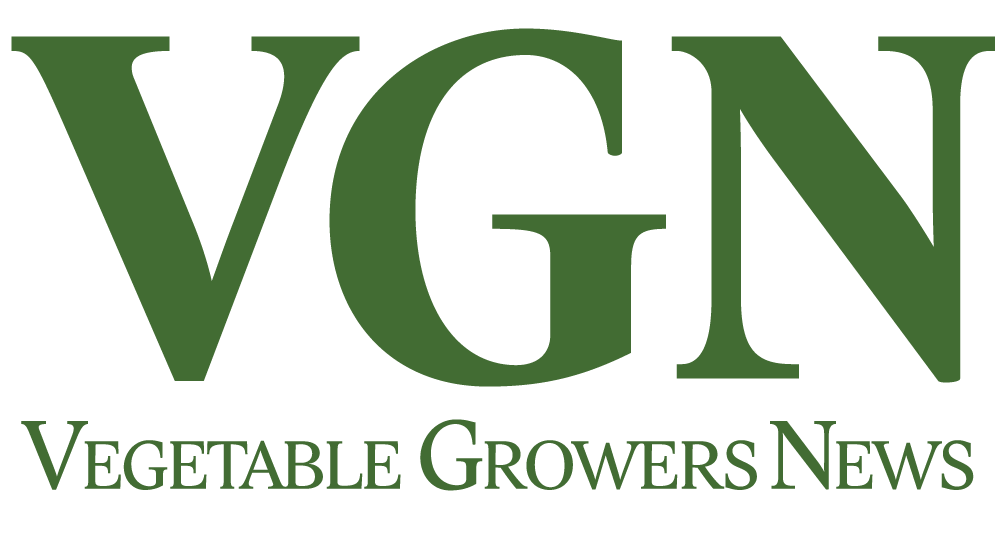
Oct 6, 2025Apples at a turning point: Orchard removal, better varieties required for grower survival
Optimism tempered with realism fueled discussions at this year’s USApple Outlook conference.
Growers, packers, marketers and large retail buyers assembled at the event in Chicago on Aug. 13-15, which enjoyed record attendance. More than 370 people heard what apple leaders are urging the industry to do to improve apple consumption and prices through growing varieties consumers desire — and removing orchards.
“We need to continue looking outside the box we’re already in,” said Brett Baker, outgoing chair of USApple’s board of directors. “We need to continue finding innovation, and we need everybody in this room and those who support the people in this room to continue and give more and offer more. We’re in an industry that is extremely innovative, and we can’t rest where we’re at now. This is the way we’re going to improve our returns to the land.”
Improving quality
Baker, president of United Apple Sales in Lyndonville, New York, said continued improvement in apple quality is necessary for per-capita consumption.
“If we can get excitement back to the consumer that they want to buy that apple, they want to experience a great opportunity and a great experience with each purchase, improvements to the consumer experience will bring improvements to our land and the returnable land,” he said.

West Mathison, president of Washington’s Stemilt Growers and Welcome Sauer, retired agriculture executive and past president of the Washington Apple Commission, presented orchard-level changes that may be required to return profitability to orchards.
Demand for U.S. apples remains flat and slightly declining with export buyers’ purchasing power falling 25%. Since 2014 — the last year Washington growers picked 142 million boxes of fruit and made profits — the farmgate break-even cost has doubled. Growers shifted from primarily export-driven varieties to more expensive ones sold in domestic and Canadian markets.
Acreage reductions coming
After the 2025-26 crop, Mathison expects Washington growers to initiate large orchard removals, similar to the late 1990s and early 2000s, when the industry removed 40,000 acres in Wenatchee and Yakima.
“I think we’re getting toward the bottom,” Mathison said. “Farm revenue policies have really slowed down as we think about it: Are we going to change by force or by choice? It really comes down to the agronomic rules of yield, size and grade. And don’t underestimate the value of horticultural acumen. We need good farmers. Farmers need a clear supply and customer strategy, plus postharvest automation to reduce costs. The bottom is near, but the J curve is still a little ways out.”
Sauer displayed charts showing varieties’ life and marketing cycles. Over the past two decades, market demand for Gala, Red Delicious, Gold Delicious and Fuji varieties slipped, while Honeycrisp and Pink Lady enjoyed increased demand and higher prices.

Variety declines
The cycle of new varieties being bid up in price for high demand, then experiencing difficult years while other new varieties enter production and take the older varieties’ place, has occurred for decades and will continue, Sauer said.
“My experience clearly showed that the key to increasing consumer economic demand for apples is to give (consumers) an eating experience that lights up their face,” Sauer said. “It’s a very difficult thing to deal with, but we have to recognize that if our trees are a factory,
20% of what we produce on our trees are culls.
“About 40% of what we produce are products that are in the money zone — grades and sizes the market really wants to buy, and they buy at profitable prices. In total, about 60% of what we produce is a byproduct, something that’s difficult to sell because the market doesn’t really want to buy it. It’s like pushing a wet string uphill on the sales desk to move those items. It’s not easy to produce 50%, 60%, 70% in the money zone. It requires scarce capital expenditures, overhead cooling, overhead shading, ground reflective cloth, intensive farming and all these other things.”
DC victories
Kaari Stannard, USApple’s treasurer and president and CEO of New York Apple Sales, Glenmont, New York, thanked Baker for his board service and noted USApple’s connections in Washington, D.C., have helped bring money to orchards. She cited USApple staff’s work with other specialty crops groups that urged the USDA to create and release funds to growers from the Market Assistance for Specialty Crops program (MASC), which compensated growers harmed by escalating input costs.
“Literally millions of dollars of assistance has flowed from Washington, D.C., out to the apple economy,” she said. “While we don’t have a long history of taking money from Washington, given the apple economy at the moment, it seems like that’s probably time well spent for your association staff to be working on these issues.”

H-2A reform
Diane Kurrle, USApple’s senior vice president, discussed the organization’s Capitol Hill work, including collaborating with other grower organizations and political leaders from both parties to end the Department of Labor’s burdensome worker protection regulations. She highlighted industry support for a bipartisan H-2A Ag Workforce Task Force, led by House ag committee chair G.T. Thompson of Pennsylvania, which is working to reform H-2A regulations.
“(The task force) has equal members of Democrats and Republicans from agriculture districts, and they spent the better part of the year really doing a deep dive into the H-2A program and learning from stakeholders like us what’s working in the program, what needs to be improved, and what the challenges are, while looking to see what they could do legislatively to make things better and make the program also accessible to some agriculture that currently can’t access it, like the dairy industry,” Kurrle said. “They came up with a broad list of recommendations, many of them agreed unanimously upon, which doesn’t happen too often with a bipartisan group.”
The 130th conference also included discussions on retailers’ views on apples, consumer expectations for fresh and processed apples, the evolving market for apple-based products, economic conditions and outlook, risk management, and addressing apple supply chain pain points.
Explore more highlights from the USApple Outlook conference, including notable industry advocate Steve Clement’s Apple Champion Award.
— Doug Ohlemeier, Assistant Editor
















